History and Original Recipe of Sorrento Limoncello
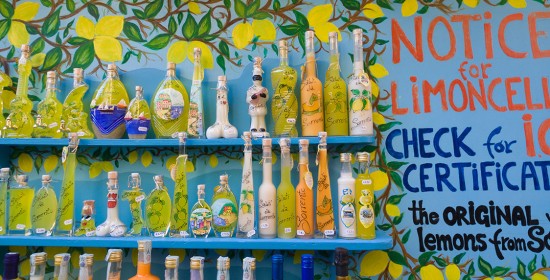
Buongiorno and welcome to Stefano’s RomeCabs, Italy’s leading provider of private Sorrento tours from Rome, and reliable transfers from Rome Airport to Sorrento. In this travel blog, we are focusing on the history and original recipe of Sorrento limoncello. Many of the greatest things in Italy are rooted in history, traditions, and legends - and sometimes the truth can be found somewhere between history, traditions, and legends. When it comes to Sorrento, it's Sorrento Limoncello. But the question remains:
Is limoncello an ancient Italian tradition, or a more recent commercial phenomenon?
Hardly anyone stopped to ponder the origins of limoncello when tasting this beloved citrine yellow nectar that’s so closely associated with the sun-kissed seaside lands of the Sorrentine peninsula, Coast of Amalfi, and the island of Capri.
Sorrento Limoncello is an important part of Italian culture that grew into a popular international delight. Because so many of our clients look forward to tasting this liquid yellow gold on our tours from Rome to Amalfi Coast, we see it fit to write about the history and the original recipe of Sorrento limoncello.
But first, what is Limoncello? And what is limoncello made from?
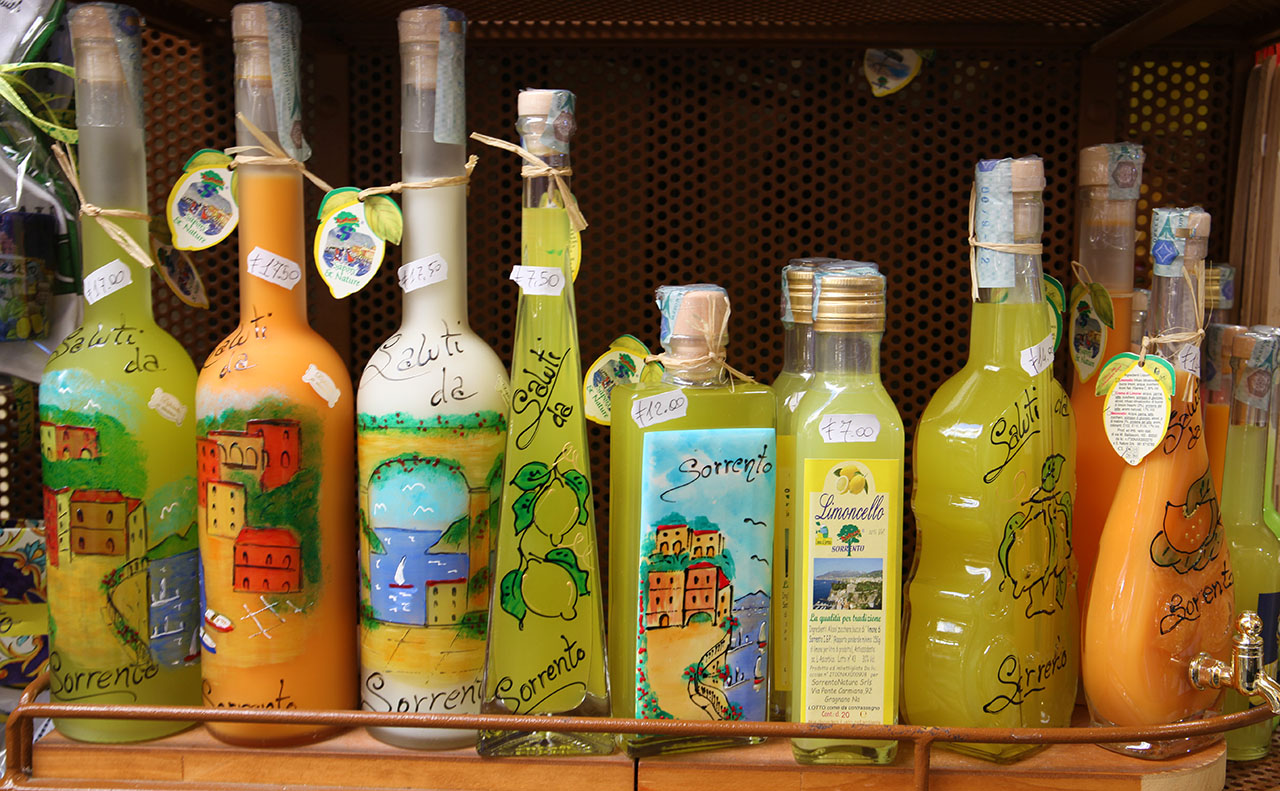
What is limoncello?
Limoncello is an Italian liquor made from… you guessed it: lemons, specifically lemons that grow on the Sorrento peninsula and on the coast of Amalfi. The liquor is bright yellow in color with a slightly turbid appearance due to the presence of essential oil droplets from the lemon zest.
Limoncello is typically 26%-32% alc./vol and served chilled in a shot glass traditionally as an aperitif before a meal or digestif after a meal to aid digestion.
Italians relish its aperitivo culture where they sip various cocktails and much on salty hors d'oeuvres that stimulate the appetite and prepare the stomach to indulge in a hearty meal. Traditionally, sipping limoncello as an aperitif is supposed to help relax and prepare the body and mind for a plentiful meal ahead.
As a digestif, the lemon oil in limoncello is a carminative, which is thought to aid digestion. While most digestifs and popular amari (Italian bitters) that help settle the stomach after a heavy meal tend to be heavy and bitter, limoncello is light, aromatic, and tasty (especially in the summer) making it a perfect perfect palate cleanser, a refreshing after-dinner drink or a nightcap as Italians tend to dine late at night.
Aperitifs and digestifs have been around for centuries, therefore a long tradition embedded into local culture.
What types of lemons are used to make limoncello?
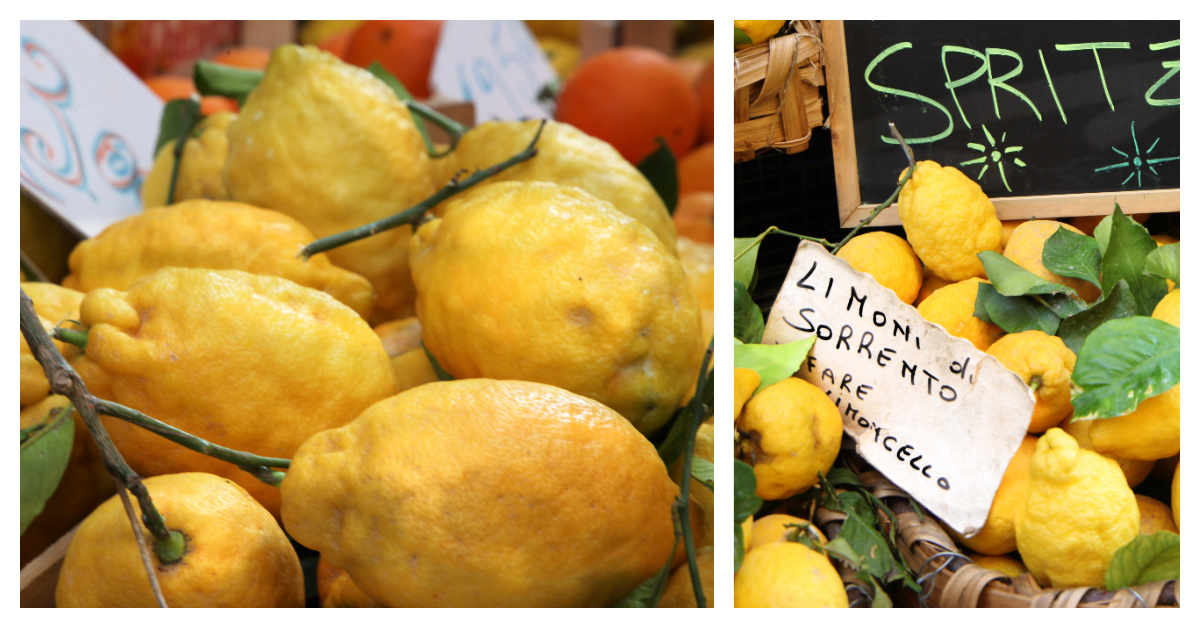
Traditional Sorrento limoncello uses the lemon zest of specific types of sfusato lemons such as Femminello St Teresa lemons native to the Sorrentine Peninsula or Sfusato Amalfitano lemons (sfusato translates to “spindle”). The yellow and thick wrinkled peel rich in essential oils and strong aromas makes the sfusato lemons the compelling ingredient of Limoncello di Sorrento.
Femminello St Teresa lemons are large bright yellow lemons with a round yet elongated shape with medium thick rinds. They have deep oil glands that release strong citrus aromas and flavors. Their pale-yellow flesh has abundant juice that’s high in acidity with a slight sweetness and few seeds.
Sfusato Amalfitano lemons are specifically grown on the Amalfi Coast and are an Italian IGP product (protected Geographical Indication) that ensures the origin and quality of the product historically and traditionally recognized by the market. The Sfusato Amalfitano lemons are large, long, and tapered lemons. The weight of the fruit is estimated at around 100 grams or more.
They have thick and wrinkled skin, intense fragrance, and sweet juicy flesh that’s moderately acidic with few seeds. They are cultivated along the Amalfi Coast in terraced gardens known as “macerine" with porous soil. Their strategic location protects them from the cold by the mountains but exposes them to the sun and sea breezes. Certain scaffolding and netting protect the lemon groves from the wind.
Sfusato lemons cover about 1,700 acres of lemon groves with about 1,550 growers producing 14,000 tons of lemons each year.
History and Original Recipe of Sorrento Limoncello
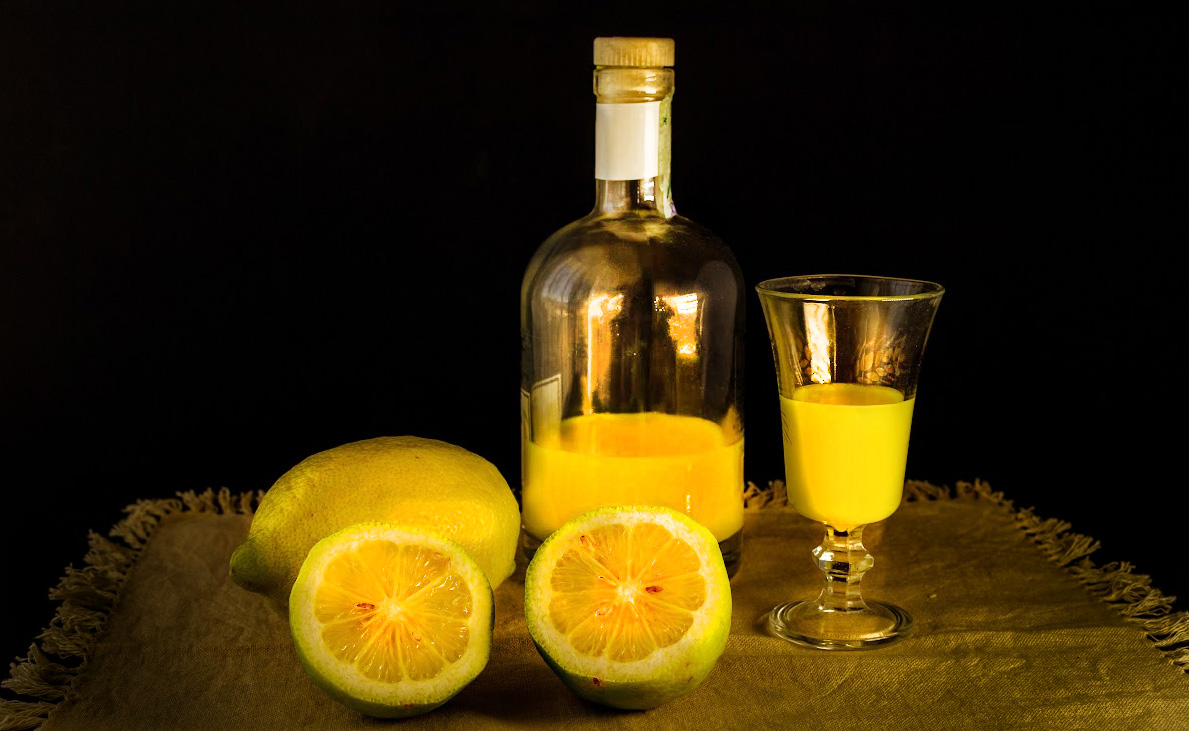
Sorrento Limoncello: Between History and Legend
Limoncello is so great, it seems everyone wants to claim they created it, making the truth nebulous and the theories many and suggestive. For every story from Capri or Sorrento, there are several from Amalfi. Therefore, it appears the history of Limoncello unfolds through a series of anecdotes and legends.
There are some suggestions that limoncello existed since the Medieval times when it was enjoyed by local farmers and fishermen in Amalfi who drank it to ward off the cold. Others maintain limoncello was invented by monks as monasteries in Italy have played an important role in the distillation and producing various liquors. Some claim limoncello was invented a century ago in Capri which is, of course, disputed by others in Sorrento. The true origin of limoncello may be lost in the mists of time and blended with legends and traditions.
Perhaps limoncello was indeed a recent invention seasoned with folkloric romantic legends and intriguing ancient origins since no written or pictorial sources have been discovered vouching for medieval, ancient, or monastic theories. Taking into consideration that limoncello is a recent invention, there are two possibilities.
According to one of the more popular versions, in the early 1900s, Maria Antonia Ferace had a small garden full of lemons and oranges at a small guesthouse she owned on the island of Capri. It is said she used the lemons from her trees to make limoncello to offer her guests.
Following the war, Maria Antonia’s grandson opened a restaurant business nearby whose specialty was the lemon liqueur made with his grandmother’s old recipes. It’s quite possible that outside of a handful of families and social circles, limoncello was largely unknown until Maria’s grandson’s son, Massimo Canale, registered the Limoncello brand in 1988 when he started a small artisan production of limoncello to provide to the area’s bars, restaurants, and markets.
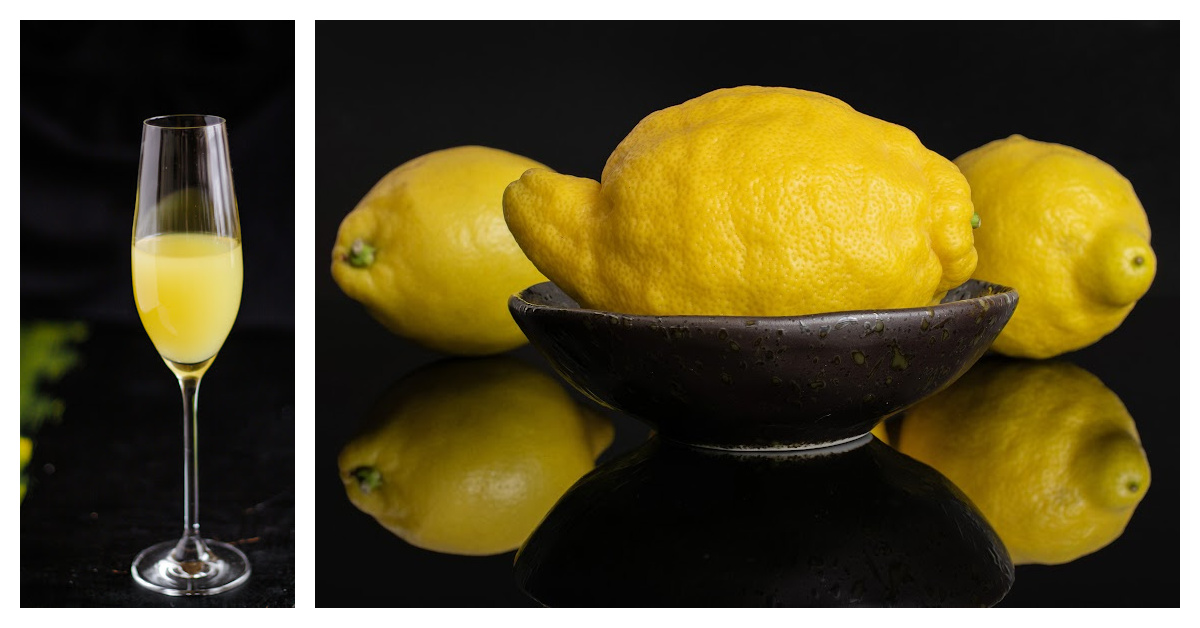
Another competing version by the Massa family places them as the creators of the limoncello recipe in the 1890s in Sorrento. According to them, the ancient recipe was passed down from generation to generation until 1991 when brothers Sergio and Stefano Massa created Villa Massa which, according to them, was the first company to produce, market, and sell limoncello in Italy and throughout the world.
So, what is the true history of limoncello? Who really created limoncello is immaterial because thus far neither claim is substantiated and we may never know. Beyond all these narratives, word-of-mouth exalted this southern Italian golden liquor across Italy and across the border making Limoncello the 2nd most popular liquor in Italy and the pride of the Campania and Italian culture throughout the world.
While imitations of limoncello are being produced internationally, the real and true limoncello is the one produced in the Sorrento area with locally grown lemons which are key to the distinct flavor of Sorrento Limoncello. This is why tasting the original limoncello is one of the things that our guests are excited about on our tours from Rome to Sorrento and Amalfi Coast.
If life gives you lemons, make limoncello!

If you are craving a taste of limoncello but are not planning a trip to Italy yet, or don’t have access to quality limoncello in your area, make your own! Even if your homemade limoncello may not taste exactly like the local Sorrento limoncello, you can enjoy experimenting and have the opportunity to offer your guests a delicious Italian liquor you’ve made yourself.
The original recipe of Sorrento Limoncello calls for just 4 ingredients. The process is simple yet requires patience as the traditional recipe requires the lemon zest to macerate in alcohol for about 80 days with adding the sugar syrup halfway through. So, plan ahead if you wish to have your limoncello ready for a special event or date. For the best results, use the best quality lemons and alcohol. You may tweak the sugar amount to your taste.
A significant difference between the traditional Sorrento Limoncello and homemade limoncello comes from the type of lemons used, and not everyone has access to sfusato lemons grown in Sorrento or Amalfi Coast. If you are unable to source Sorrento or Amalfi lemons, Meyer lemons are a good substitute. Otherwise, choose quality lemons (preferably organic free of wax or pesticides ) with thick skins as they tend to have the best lemon oil content.
Here is the traditional recipe for Sorrento Limoncello.
Traditional recipe of Sorrento Limoncello
Ingredients:
8 Sorrento IGP lemons (or other quality lemons such as Meyer lemons)
1 liter of quality alcohol at 95 ° such as vodka (equivalent to 1 quart)
1 liter of water (equivalent to 1 quart)
700 grams of sugar (equivalent to 3.5 cups)

Method:
- Wash the lemons carefully under cold running water using a brush to scrub off any dirt. You don’t want any dirt or chemicals in your limoncello. Dry the lemons thoroughly before peeling them.
- Peel the lemons removing only the yellow zest without the pith (the white and spongy part of the lemon) as the pith can give the liqueur a bitter taste. You can use a Microplane if your vegetable peeler or paring knife does not peel off the zest thinly. You can trim off any excess pith on the skin by running a sharp knife almost horizontally against the peel. Whatever tool or technique you use to remove the zest of the lemon, just make sure you don’t get any white pith along with it.
- Pour 700 cl (or approx ¾ liter) of alcohol in a glass jar.
Add the lemon peels in the alcohol, and close the lid of the jar tightly.
Place the jar in a dark, cool, and dry place away from heat and light for about 4 weeks for the lemons to macerate.
Keeping the jar away from light and heat is important as the active ingredients are sensitive to light and heat and it could compromise the flavor of the limoncello. Shake the jar daily to mix the ingredients well to help with the infusion process.
After the maceration period is successfully complete, the alcohol with the lemon zest should acquire a pale yellow color. You can examine the zest by scooping out a spoon from the jar. If the zest has turned pale and brittle, the infusion is complete and all the lemon oils have been released into the alcohol.
- Now it’s time to prepare the syrup.
Place a large saucepan with the water on the stove with medium heat, and add the sugar stirring until dissolved. Let the syrup simmer without bringing it to a boil. Remove from heat and allow the syrup to cool completely. - Pour the syrup into the jar of alcohol and lemon zest, and add the remainder of the 300 cl (or approx ¼ quart) of alcohol. Give everything a good stir, seal the jar again, and allow it to rest another 40 days to rest.
- After the 40 days have been completed, you may bottle your limoncello.
You first have to filter the alcohol to completely remove the lemon zest. Use an ultra-fine sieve, coffee filter, or layers of cheesecloth to ensure that the liquor is as clear as possible and free of any zest.
Bottle the limoncello in your preferred bottles and place them in the fridge or freezer from where the limoncello is served chilled in a shot glass or cordial glass as an excellent digestive after a meal. Serving limoncello straight from the freezer or fridge (never over ice) exalts its flavors. If you wish to place the limoncello in the freezer, it’s important to use quality alcohol that will not freeze.
Useful tips for making limoncello:
- Use only high-quality alcohol for best results and to prevent it from freezing in the freezer. Vodka is a good choice for limoncello.
- Choose PGI Sorrento Lemons, or large organic and untreated lemons with thick and wrinkled peel such as Meyer lemons. If the lemons you find are smaller than the Sorrento lemons, use additional smaller lemons to compensate for the size difference.
- You can adjust the amount of sugar according to taste.
- After bottling, place the Limoncello di Sorrento in the fridge or the freezer and serve it chilled at the end of the meal. Just be sure not to fill the bottle to the brim if you place it in the freezer.
- Because of the beautiful color of limoncello, it’s preferable to pour it into a clear or crystal shot glass or cordial glass and let the yellow-lemon color shine through.
- Some prefer to drink limoncello at room temperature, stirred into champagne or tonic water, or added to gelato and fruit salads.
Now that you know the history and original recipe of Sorrento limoncello, visit Sorrento or Positano on your next trip to Italy and taste limoncello at its most authentic.
We invite you to browse through our selection of Day Tours from Rome to the Amalfi Coast and Sorrento for an exciting day trip to this mesmerizing part of Italy. While in Sorrento or Positano, don’t miss out on tasty limoncello-infused gelato, chocolates, candies, and desserts crafted by creative local Sorrentine artisans.
Turn your Transfer from Rome to Sorrento into an exciting day trip adventure with RomeCabs Sightseeing Transfers from Rome:
- Rome to Sorrento with a visit to Pompeii
- Rome to Sorrento with a visit to Herculaneum
- Rome to Sorrento with a visit to Tivoli Villas
Thank you for choosing Stefano’s RomeCabs for your private tours in Italy as well as transfers from Rome to Italy's top destinations. We look forward to showing you beautiful places and creating wonderful memories you will cherish forever.
* Find us online also on:
